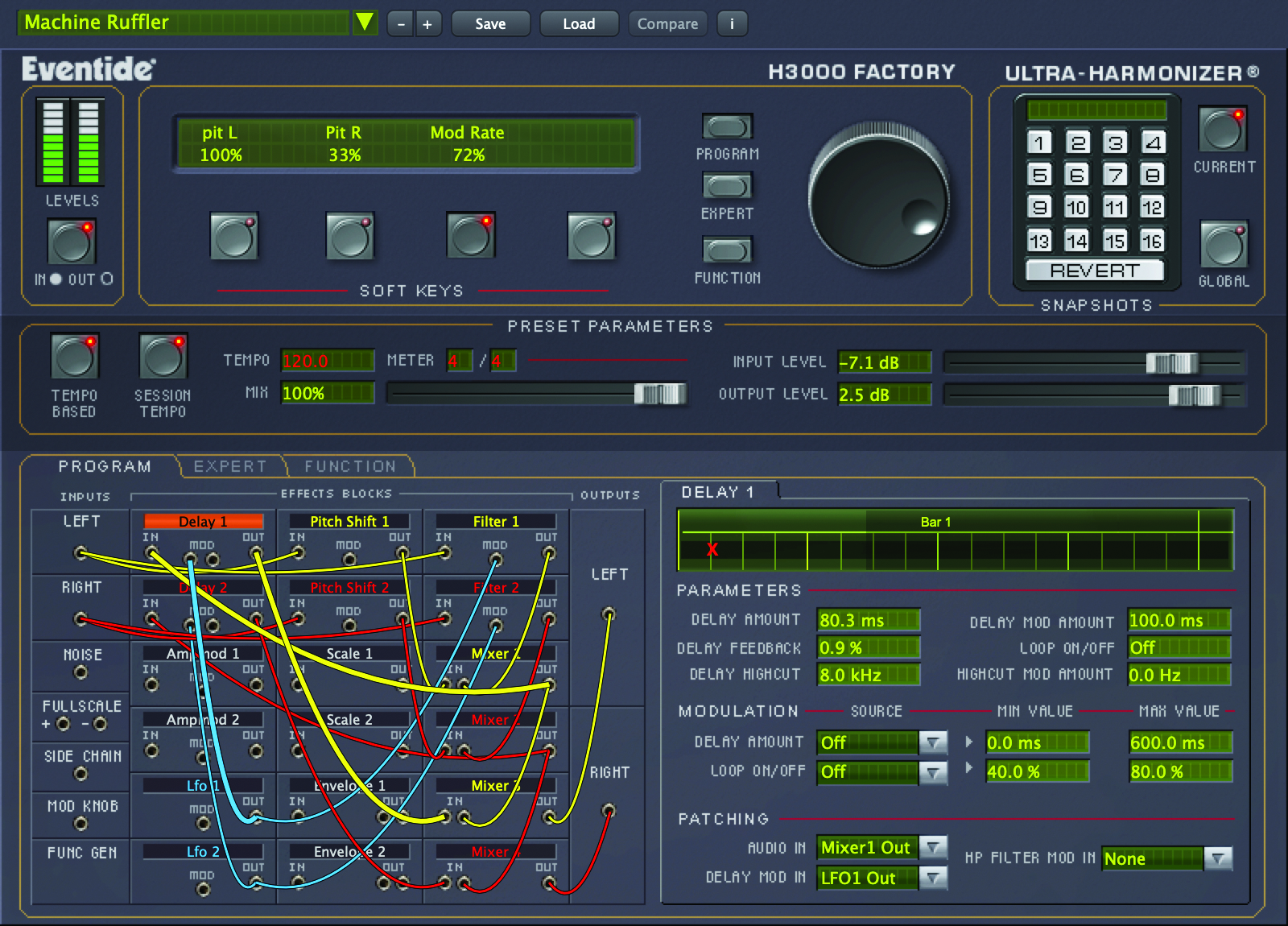"For over a minute, the whole track goes on a time-stretch journey": 5 tracks that make creative use of time-stretching
By the ’90s it might have seemed to some like all of the possibilities for subverting playback had been done… or were they?

The option to change pitch and time independently in the form of time-stretching and pitch-shifting was a game-changing development for music production. Even so, early options had major limitations, including short sampling time, slow offline processing and unpredictable sonic outcomes.
Still, one person’s junk is another’s gold, and this didn’t stop cutting edge producers embracing them warts and all. Over time, processing quality improved and shifted from digital hardware to software, but this just created another wave of opportunity for the creatively inclined. Let’s take a look at a few tracks that make creative use of these effects.
1. Metal Heads – Terminator
Early drum & bass was renowned for its sped up loops and vocals combined with makeshift repitched keyboard samples, and this track by Metal Heads (Goldie, DJ Freebase and Markus Rutherford) is a perfect example. But it’s the drum loop that interests us, in particular the sections at about 2.35 and 3.10.
Out of nowhere, the loop changes pitch without changing tempo. Nowadays, we’d think of this as pitch-shifting, and the way in which the pitch creeps up has all the hallmarks of the classic Eventide H3000 Ultra Harmonizer effect, which is what we understand was used. However, we’ve included the track as it spawned many similar sounds that used sampler time-stretch algorithms rather than pitch-shifting.

2. 4hero – Journey From the Light EP
Electronic group 4hero started out making breakbeat and techno but soon shifted gear and became trailblazers in the newly burgeoning rave scene. At the time this 1993 EP was released, it was categorised as darkcore (a precursor to jungle and drum & bass). It’s the title track that’s of interest to us and the various sections that have been time-stretched.
From the outset you get a grainy vocal effect that has the hallmark sound of early time-stretching and this reappears later in the track as well. But by far the most prominent bit of processing is the main beat loop. At about 1.40 and 3.40, sequential bars are treated to three different pitch settings, creating an upward motion to the loop. The bass continues to play alongside this, but the loop is mixed loud and proud, so the ringy sound of the processed loop achieves maximum impact.
3. Fatboy Slim – The Rockafeller Skank
Musical magpie Norman Cook really hit his stride with his second Fatboy Slim album. Not content with pinching a hefty serving of Northern Soul classic Sliced Tomatoes, borrowing a Duane Eddy guitar riff and reconfiguring the vocals of rapper Lord Finesse, Norm set about building a middle section the likes of which had never been heard in mainstream music.
Want all the hottest music and gear news, reviews, deals, features and more, direct to your inbox? Sign up here.
For over a minute, the whole track goes on a time-stretch journey, gradually grinding to a halt before rejoining the main chorus for its final fling. Perfectly suited to the track and era.
4. Double 99 – RipGroove
This classic speed garage tune from 1997 still regularly lists in all-time UK garage top tens. In keeping with the times, it’s a sample-heavy affair that lifts elements from a number of tracks, layering them over a driving dub bassline and skippy beats. But it’s the distinctive vocals that really mark it out, comprising a looped snippet of Tina Moore and some obscure time-stretched vocals, courtesy of reggae artist Top Cat.
The latter had already been sampled for drum & bass track Wheel Up by DJ Gunshot and it’s actually the remix of that track, Wheel ‘N’ Deal, that provides the time-stretched vocal on RipGroove.
5. Sub Focus, Dimension – Ready To Fly
Time-stretching continues to crop up in contemporary music and producer Sub Focus is no stranger to it, having rehashed the RipGroove Top Cat vocal for his 2013 track Original. However, it’s not the act of making vocals longer but making them shorter that features in this 2022 track. Starting with a demo vocal that was recorded at a much slower tempo, the vocal was time-compressed to fit the much faster 174bpm tempo.
Happy that it worked, the vocal was then re-recorded properly, but to retain the sped-up effect, this was once again done at the slower tempo. The final vocal was then time-compressed and given a final tweak in Melodyne to adjust wobbly bits. On this track, and all the ones mentioned, artists’ shaped time to their creative whims, and helped normalise time-based effects as intrinsic facets of modern music production.


Jon is a London based platinum award winning mixer, producer, composer and club remixer with a diverse CV that spans dance, pop, rock and music for media. He’s also a long term contributor to MusicRadar's music technology tutorials and reviews. Whether working alone or collaborating he usually handles final mixdowns, so you’ll also find MusicRadar peppered with his handy mixing tips.

![Fatboy Slim - Rockafeller Skank [Official Video] - YouTube](https://img.youtube.com/vi/FMrIy9zm7QY/maxresdefault.jpg)

